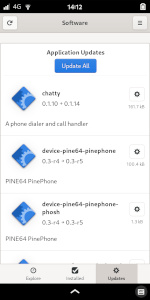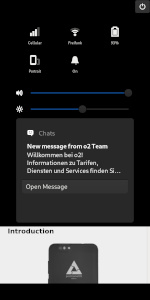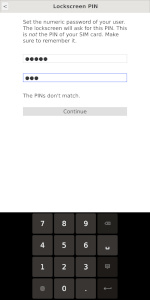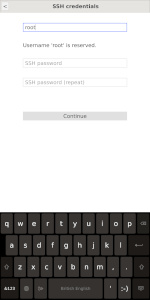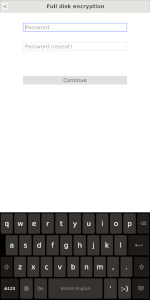Introduction
Hardware news
We are happy to share that in addition to the standard PinePhone CE hardware configuration, the postmarketOS CE can be ordered in an all-new Convergence Package. It comes with increased RAM (3 GB instead of 2 GB), eMMC (32 GB instead of 16 GB) and price ($199.99 instead of $149.99), as well as the nice USB-C dock seen in the picture.
With USB-C power-in, HDMI, Ethernet and two USB ports, there is much potential to turn your phone into something like a desktop computer. (Beta reminder: while already way more convenient than this setup, convergence needs more work on the software side.)
Furthermore, the PinePhone postmarketOS CE will have a fix for a design flaw present in earlier revisions of the PinePhone. In the much appreciated spirit of sustainability, PINE64 explains how owners of previous revisions will be able to get it fixed. More about that and other hardware details are in today's PINE64 announcement.
Software news
Several fixes and improvements were made in postmarketOS, that relate to the PinePhone (thanks to @Cogitri, @Danct12, @DolphinChips, @ell1e, @MartijnBraam, @megi, @ollieparanoid, @PureTryOut). Most importantly, phone calls with audio are fixed on the stable channel. Shout out to @a-wai from Mobian for developing a workaround to let Phosh switch the audio channel for calls, we packaged this patch for now.
GNOME software and other applications have gotten Purism's mobile UI patches on the stable channel. Together with the blazingly fast package manager from Alpine Linux, this gives a convenient method of installing updates with a touch UI in a matter of seconds. Firefox gets scaled to fit the mobile screen (making it pretty usable) and the Epiphany browser has gotten a privacy friendly user-agent.
Installer with optional SSH server and encryption
The postmarketOS on-device installer has been extended to not only ask for the LUKS full disk encryption password (which we find absolutely essential). But also to allow setting the lockscreen PIN and to enable an SSH server. The SSH login would be very weak if we just used the default user with the lockscreen PIN as password, so we have disabled that in sshd_config and ask for a second set of credentials instead. People are even encouraged to disable password login completely and install an SSH key when using the SSH server for the first time.
This installer is slowly shaping into a blend of a typical, powerful Linux distribution installer with an intuitive (even for non-tech people) user interface that is suitable for mobile devices. Below the surface, we are using Calamares, which is already widely used as installer among desktop Linux distributions. We plan to upstream our custom modules into the main Calamares repository, so other mobile-centric Linux distributions can use and improve them too. Thanks to @adriaandegroot for quickly fixing several bugs in Calamares related to these efforts.
Pre-order now!
If you like what you see here, there's no time like the present to head over to the PINE64 shop and order your PinePhone postmarketOS community edition.




